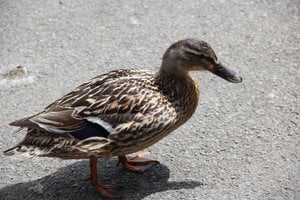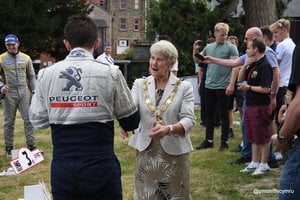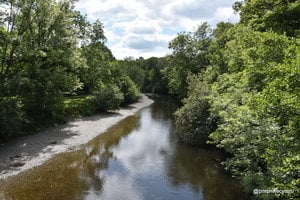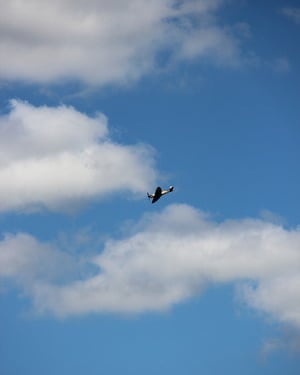History of Builth Wells
Builth Wells (Welsh: Llanfair ym Muallt) is a town in the county of Powys, within the historic boundaries of Brecknockshire, mid Wales, lying at the confluence of the River Wye and the River Irfon, in the Welsh (or Upper section) of the Wye Valley. It has a population of 2,352.
Builth derives from the Welsh Bu Allt, meaning the wild ox of the wooded slope. The Welsh name Llanfair-ym-Muallt means The church of St. Mary in Buallt (Buallt mutating to Muallt).
History and Geography
Builth first emerged in post-Roman times, probably on the other side of the Irfon river from its present site at Dol Eglwys (Church Mound) where a ruined early medieval church is thought to have stood. Vortigern, the British ruler alleged to have invited the Saxons to Britain is sometimes said to have owned land in nearby Builth Road on the Radnorshire side of the River Wye; the site previously having been known as Cwrt Llechrhyd. Early Post-Roman Builth was an independent kingdom. The most famous ruler was Elystan Glodrydd from whom many local gentry claimed descent. As an important component of Rhwng Gwy a Hafren, a political entity referred to in the poems of Taliesin, Builth was regularly at war with the Kingdom of Powys. Ecclesiastically, the Deanery of Builth has always been part of St Davids / later Swansea and Brecon, rather than St Asaph, the Powys diocese. Glodrydd probably lived at Llanafan Fawr rather than the modern site of Builth Wells. Until the foundation of the Norman town Llanfair ym Muallt the main settlement was Llanafan. Stories about Philip de Braose centre on Llanafan not modern Builth.
The site of the town controls an important ford across the Wye and the crossing point of the main north-south route in Wales and an important south-west-east route. It was militarily and economically significant for centuries. The Welsh name for the town “Llanfair ym Muallt” refers to the foundation of a Norman church dedicated to St Mary. The churchyard is however, a truncated oval which is strongly suggestive of an original Celtic foundation. The town was laid out as two streets connecting a castle and a church and was protected by a hedge rather than a wall. This type of town is sometimes called a Bastide, a kind of medieval market settlement. In exchange for rights to live and trade in the market of the new town skilled townspeople paid the lord various dues. In many parts of Wales the skilled workers were of Flemish or English origin. However, Builth may have had important significance in Welsh language culture as The Mabinogion was long thought to have been recorded in its final form by medieval monks here and recent historical opinion has shifted to a view that it was written down by a lawyer in Builth.
Despite repeated destructive fires, at one time involving a charitable collection in London, Builth Wells grew as a traditional Welsh market town. It received major boosts from the development of toll roads; it was at the centre of early road networks and the arrival of the railway at Llanelwedd. The railway allowed it to develop as a spa, and is well known nationally as the location of the Royal Welsh Showground, home to the Royal Welsh Show (although the showground is actually over the river Wye in Llanelwedd, Radnorshire).
Builth Castle
The existing Builth Castle was built under King Edward I, the construction taking nearly five years in the 1270s. It replaced an earlier castle built by the Marcher Baron Philip De Braose who claimed the area as a Marcher lordship (Marcher lords were substantially independent of the King of England and the Prince of Gwynedd). There may also have been an earlier castle at Caerberis (the fort of Peris) on the north side of the River Irfon near protecting the original settlement. Owain Glyndwr’s forces attacked Builth Castle when it was in the charge of John Oldcastle during the rebellion of Owain Glyndwr and it was repaired in 1409, the bill being £400.
Llywelyn ap Gruffudd, prince of Gwynedd, known in North Wales as Llywelyn Ein Llyw Olaf accompanied only by a squire was refused entry to Builth Castle (the Marcher Barons were always changing sides) following an ambush by an Anglo-Norman war party from Hay. In Erwood - a village close to Builth Wells – he escaped from ambush by asking a smith (Madoc Coch) to turn around his horses hooves to leave a false trail. He hid the night in a “cave” at Aberedw rocks. He was killed attempting to rejoin his men at Cilmeri. In one version of the story he holds a narrow bridge across the Irfon against the war party from Hay while his squire rides for help. There is a monument to Llywelyn at nearby Cilmeri, where his men having lost their leader were routed by the Normans. In another version, perhaps more likely, he was killed by accidental chance (as medieval nobles usually captured each other for ransom) and his body not recognised until later. This is sometimes referred to as the battle of Irfon bridge. He had come south to rally the men of the Lordship of Builth in December 1282, as part of a dispute about the ownership of the commote of Arwystli.
In the centre of Builth Wells there is a 1000 feet square mural depicting the final days of Llywelyn ap Gruffydd, the last native Prince of Wales. The mural shows Llywelyn and his men, a scene depicting the fighting and a representation of Builth Castle, where Llywelyn was turned away when trying to flee from the English. It also shows a blacksmith – Red Madoc – who reversed the horseshoe on Llywelyn’s horse so that the prints in the snow would look as if he was travelling in the opposite direction when fleeing from his ambushers. The mural was designed by Ronald Swanwick and painted by Ronald Swanwick and Neil Chambers.
The death of prince Llewelyn ap Gruffydd - Cilmeri, 11th Decemeber 1282
Submission by Malcolm Morrison, 2019
Perhaps no other event of this kind is so contentious and has been so mis-represented over the years. The events leading up to Llewelyn’s final conflict with the English are complex, but we know that following the unexpected Welsh success at Menai Straits, Llewelyn and his army came south through Powys, arriving just outside of Builth in December 1282. Rumour, and some evidence, appear to show that Roger Lestrange was credited with the means whereby Llewelyn’s death was accomplished[1].
Llewelyn appears to have led a large army to the Llanganten area[2], from where he sent representatives to receive the homage of the men of Brycheiniog. Apparently, through good intelligence, the supporters of King Edward I has assembled a large force in the area.
What actually happened is not clear, however it is believed that whilst Llewelyn was away from his army, the English were able to cross the river and attack the leaderless Welsh army from the rear, resulting in a rout.
Several sources from the 13th century, both English and Welsh, have Llewelyn’s army occupying the hillside between the rivers Wye and Irfon near their confluence, with a strategically important bridge nearby being held by the Welsh[3]. There are conflicting accounts of the ensuing battle, but most seem to agree that prince Llewelyn was not with his army at the time of his death. He was mortally wounded by an English knight but not recognised until later, when his request for a priest was denied and he beheaded with a sword.
Roger Lestrange, in his report to the king, stated that Llewelyn was killed, his army defeated, and the flower of his men killed. Archbishop Peckham refers to seeing a treasonable letter disguised by false names found in the most secret part of Llewelyn’s body, along with his privy seal[4], which perhaps adds weight to the many conspiracy theories that survive, including traditional links to the village of Aberedw (that first appear in the late 16th century).
The imposing granite monument in the village of Cilmeri replaced the original monolith erected by Squire Bligh of Cilmeri Park in 1956. It is traditionally believed that it was close to this spot that prince Llewelyn was killed, and the nearby well was where his head was washed following execution. His body is thought to be buried at Abbey Cwm Hir, but his severed head was displayed at the Tower of London for many years afterwards.
The Welsh struggle against the English continued until the wars of Owen Glyndwr in the 15th century.
[1] J Beverley Smith Llewelyn ap Gruffydd pp557
[2] Brut y Tywysogion Peniarth MS 20
[3] JBS pp562
[4] Rh Griffiths, 1282 pp11
Livestock breeds
The name Builth is derived from the Welsh Bu-Allt which loosely translated means ‘cattle range’. The White Bull of Builth may be a reference to a herd of White Park Cattle that lived in the area from Post-Roman times. Two herds survived in Wales to modern times. The laws of the time suggest that the medieval and later economy of the Welsh borders was strongly dependent on cattle. The Hereford cattle breed, named after Hereford market where it was most prominently sold was the main breed of the Welsh borders. Builth was the market for a variant of the Hereford called the Builth Smokey Face. This was the traditional animal of the area but the breed has not existed for many, many decades.

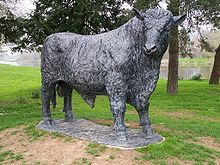
The Welsh Black cattle have very little to do with the history of Builth, except in so far as Cardiganshire cattle-drovers drove herds of cattle through Builth to markets in England. Beef cattle have largely vanished from the area.
The Beulah Speckled Face is a local breed of sheep. Nearby Mynydd Epynt was famous for its horses until it was taken over for military training purposes.
The beef cattle market has vanished and economically sheep are now vastly more important than cattle with consequences for the traditional woodlands of the area, the salmon runs and other important ecological features.
Transport
The town is served by Builth Road railway station on the Heart of Wales Line, which is located just over a mile to the north, having lost its more central (Builth Wells) railway station on the Mid-Wales Railway in the 1960s under the Beeching Axe. A dedicated cycle route linking the town with Swansea has been proposed and a 13-mile section of the route from Swansea has already been developed.
One of the main Wales north-south trunk roads, the A483, passes through the town, using the former railway route. As of June 2009 part of this road, along with the other main route through town (A470), is the subject of a transport study by the Welsh Assembly to help alleviate traffic congestion in the town centre.
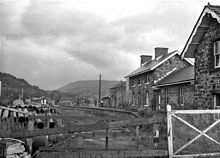

The 18th century bridge at Builth Wells carries heavy vehicles on the A470. It has six fine masonry spans, with relatively small round cutwaters, which are fitted on the upstream side with stout steel fenders to provide protection from debris. The centre of the bridge has a pedestrian refuge on each side. The arches have been reinforced by a layer of concrete in the soffit.
As of May 2016, Builth Wells Town Council, working with Powys County Council and the Welsh Assembly Government refurbished and expanded the public toilets on the Groe, to serve the local community, visitors and to provide a better facility for haulage users of the A470.
Rare Postbox
Builth Wells has the distinction of having one of the very few post boxes in the United Kingdom bearing the cypher of King Edward VIII, the uncrowned king who abdicated in 1936. The building is protected and currently used as an architects office.


HOME | COUNCIL INFORMATION | GDPR POLICY | CONTACT US
© Builth Wells Town Council 2024. Website design by Pixelhaze.
Mandatory Documentation


